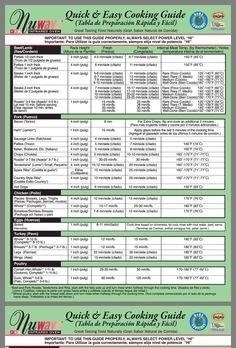Welcome to the KitchenAid Ice Machine Manual, your comprehensive guide to installing, operating, and maintaining your ice maker. This manual covers essential topics like setup, maintenance, and troubleshooting to ensure optimal performance. Access it online at KitchenAid’s official website for detailed instructions and safety tips.
Overview of the KitchenAid Ice Maker Models
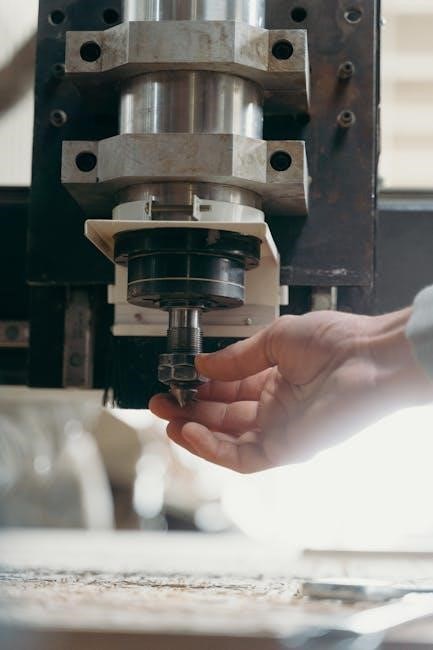
KitchenAid offers a range of ice maker models designed to meet various needs, from compact under-counter units to larger freestanding ice machines. Popular models include the KUIC15POZP, KUIC18PNZS, and KUID308HPS, each featuring advanced ice-making technology. These models vary in ice production capacity, noise levels, and installation requirements. The KUID308HPS, for instance, is an 18-inch automatic ice maker with a sleek design, while the KUIC15POZP is known for its compact size and efficiency. All models emphasize durability and performance, ensuring consistent ice production. For specific details, refer to the official KitchenAid website or download the respective user manual. This ensures you find the perfect model for your kitchen setup and preferences.
Importance of Reading the Manual
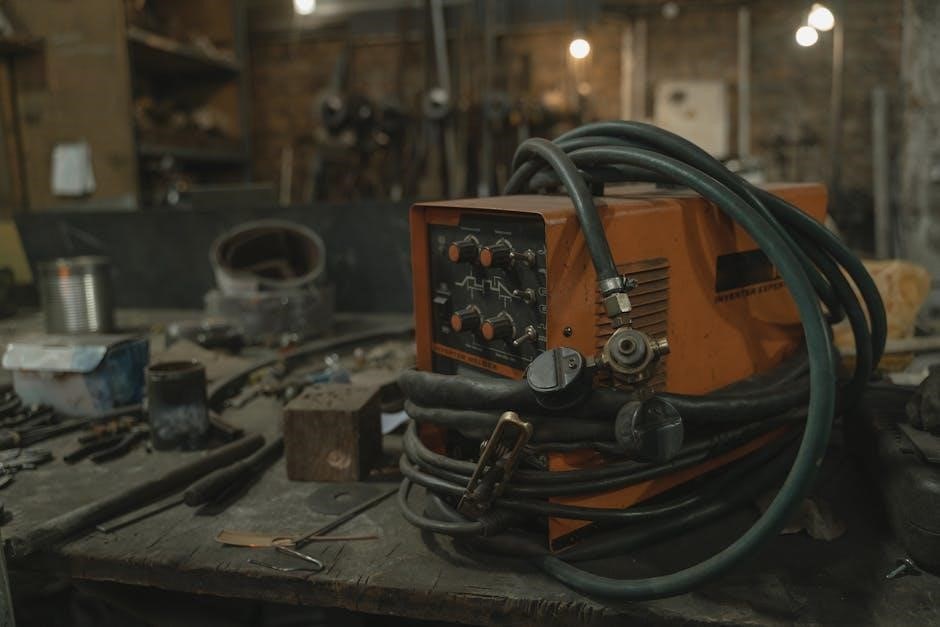
Reading the KitchenAid Ice Machine Manual is essential for proper installation, operation, and maintenance. It provides critical safety precautions, installation guidelines, and troubleshooting tips to ensure optimal performance. The manual outlines features specific to your model, helping you understand controls and settings. By following the instructions, you can avoid common issues and extend the lifespan of your ice maker. Additionally, the manual includes warranty information and maintenance schedules. Ignoring it may lead to improper setup or safety hazards. Always refer to the official KitchenAid website for the most accurate and updated version of the manual tailored to your specific model.
Where to Find the Manual Online
To easily locate the KitchenAid Ice Machine Manual, visit the official KitchenAid website at www.kitchenaid.com/manuals. Enter your model number to download the PDF version free of charge. Ensure you have your model number handy, typically found on the inside of the ice maker or in the product documentation. This direct access allows you to print or save the manual for future reference. Additionally, third-party websites offer downloadable versions, but always verify the source for authenticity. For the most accurate and updated information, relying on KitchenAid’s official resources is recommended. This ensures you have the correct guide tailored to your specific ice maker model.

Installation Guidelines
Ensure proper installation by a qualified technician, following the provided instructions. Disconnect water and power supply before starting. Align the drain pump and level the unit for optimal performance. Always refer to your specific model’s guide for detailed steps and safety precautions.
Preparation for Installation
Before installing your KitchenAid ice maker, ensure you have the correct tools and space. Locate the model number on the unit or packaging to download the specific manual. Gather a drill, wrench, and water line kit. Choose a well-ventilated area near a water supply and drain. Ensure the floor is level and sturdy to support the machine’s weight. If installing under a counter, measure the space to fit the unit securely. Disconnect power and water supply before starting. Align the drain pump according to the manual’s instructions. Read the safety precautions thoroughly to avoid accidents. Ensure all components, like the fill tube, are free from damage. If unsure, consider hiring a professional for proper setup.
Step-by-Step Installation Process
Begin by placing the ice maker on a level, stable surface. Secure it using the provided brackets to prevent movement. Connect the water supply line to the ice maker’s inlet valve, ensuring no leaks. Install the drain pump according to the manual’s instructions, positioning it near the unit. Align the fill tube properly to avoid kinking or blockages. Plug in the ice maker and ensure all connections are tight. Refer to the manual for specific guidance tailored to your model, such as the KitchenAid KUIC15POZP or KUIC18PNZS. Follow the installation guide carefully to ensure proper function and safety. If unsure, consult a professional to avoid potential issues.
Connecting the Water Line
Connecting the water line is a critical step in your ice maker’s installation. Start by turning off the main water supply to avoid leaks. Locate the water inlet valve on the ice maker, typically found at the rear or bottom. Attach the provided water supply line to the inlet valve, ensuring it is securely tightened using an adjustable wrench. Use Teflon tape on threaded connections for a leak-proof seal. Run the other end of the tubing to a compatible water supply source, such as a refrigerator water line or a nearby faucet. Avoid kinking or twisting the tubing to maintain proper water flow. Once connected, turn the water supply back on and check for leaks by inspecting all connections. If unsure, consult a professional plumber to ensure a safe and proper setup.

Operating the Ice Maker
Turn on the ice maker by switching it to the “Ice” mode. Monitor ice production, ensure the water supply is connected, and adjust settings as needed for optimal performance.
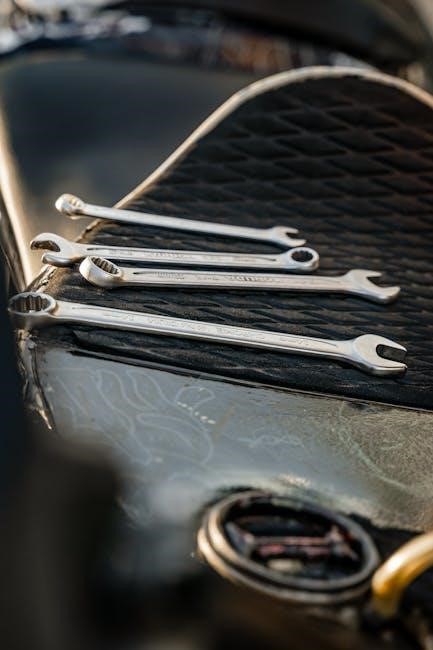
First-Time Setup and Initialization
Before using your KitchenAid ice maker, ensure it is properly unpacked and placed on a level surface. Inspect the unit for any damage or defects. Connect the water supply line securely to avoid leaks. Plug in the ice maker and allow it to cool for at least 24 hours before initializing. Press the power button to start the unit and follow the control panel instructions to set your preferences. Run a cleaning cycle if recommended by the manual. Allow the ice maker to produce its first batch of ice to ensure it is functioning correctly. Refer to the control panel guide for specific initialization steps tailored to your model. Proper setup ensures efficient ice production and longevity of the appliance.
Understanding the Control Panel
The control panel on your KitchenAid ice maker is designed for easy operation and monitoring. It typically features a power button to start or stop the unit, along with settings to adjust ice production speed and size. LED indicators provide feedback on the machine’s status, such as when the ice bin is full or if maintenance is needed. Some models include a digital display for precise temperature control and ice level monitoring. Familiarize yourself with the buttons and lights to optimize performance. Refer to the manual for detailed explanations of each feature and its function. Proper use of the control panel ensures efficient ice production and helps maintain the appliance’s longevity. Always check the manual for model-specific instructions, as features may vary.
Setting Ice Production Preferences
Your KitchenAid ice maker allows you to customize ice production to suit your needs. Use the control panel to adjust settings such as ice cube size, production speed, and the amount of ice to be made. Some models offer options for fast ice production or energy-saving modes. Ensure the ice bin is properly aligned and not full before selecting your preferences. Refer to the manual for specific instructions on navigating the menu and saving your settings. Properly configuring these preferences ensures efficient operation and minimizes unnecessary energy use. Always consult the manual for model-specific guidance, as features may vary. Adjusting these settings correctly helps maintain optimal performance and meets your household’s ice demands effectively.
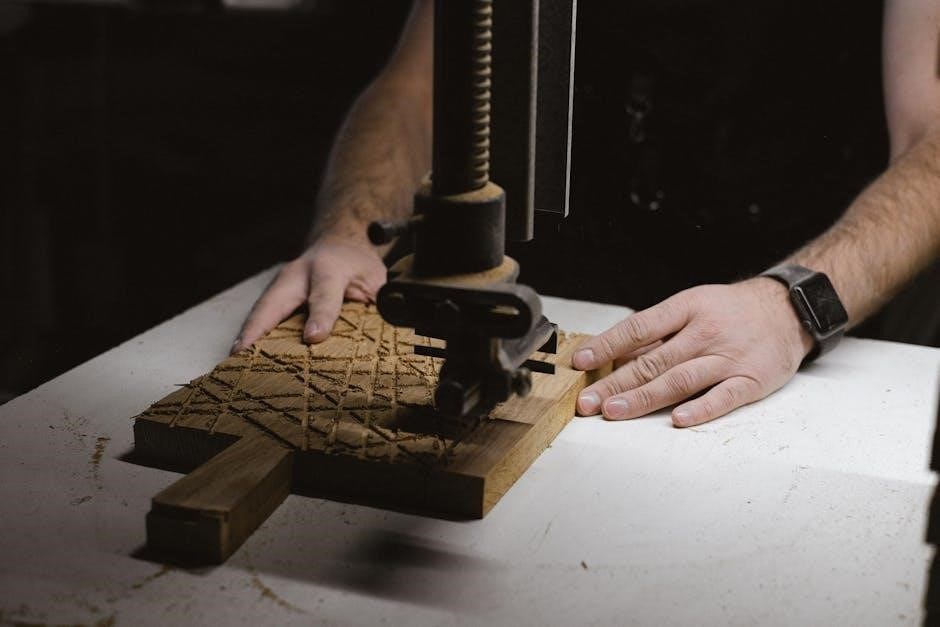
Maintenance and Cleaning

Regularly clean your KitchenAid ice maker to prevent mineral buildup and bacterial growth. Check and clear ice blockages, wipe surfaces with a mild detergent, and ensure proper water flow for optimal performance. Refer to the manual for detailed cleaning instructions to maintain efficiency and hygiene. Always unplug the unit before cleaning. Proper maintenance ensures consistent ice production and longevity of your appliance. Regular upkeep also helps prevent common issues like reduced output or uneven ice formation. Follow the recommended cleaning schedule to keep your ice maker in excellent condition. Cleaning is essential for maintaining both performance and health standards. Always use approved cleaning agents to avoid damaging components. Keep your ice maker clean and well-maintained for years of reliable service. Regular maintenance also helps in reducing energy consumption and ensuring silent operation. Ensure all parts are dry after cleaning to prevent rust. Cleaning the water filter and ice bin regularly is crucial for fresh-tasting ice. Avoid using abrasive cleaners that might scratch surfaces. Always rinse thoroughly after cleaning to remove any residue. Regular maintenance ensures your KitchenAid ice maker continues to deliver high-quality ice consistently. Cleaning the condenser coils periodically can improve efficiency and reduce energy bills. Proper maintenance also extends the warranty coverage in some cases. Keep your ice maker in a well-ventilated area to prevent moisture buildup. Regularly inspect and replace worn-out parts to maintain performance. Cleaning the drain pump and hoses ensures proper drainage and prevents leaks. Always follow the manufacturer’s guidelines for cleaning and maintenance to avoid voiding the warranty. Regular maintenance ensures your ice maker operates quietly and efficiently. Cleaning the ice maker’s exterior with a soft cloth keeps it looking new. Always prioritize safety when cleaning electrical components. Regular maintenance is key to prolonging the life of your KitchenAid ice maker. Cleaning the ice maker regularly ensures it continues to produce clean, fresh ice. Always refer to the manual for specific cleaning instructions tailored to your model. Regular maintenance and cleaning are essential for optimal performance and longevity of your KitchenAid ice maker. Cleaning the ice maker’s interior and exterior regularly prevents dust and dirt buildup. Always ensure the ice maker is dry after cleaning to prevent mold growth. Regular maintenance ensures your ice maker remains a reliable appliance for years. Cleaning the ice maker’s sensors ensures accurate ice level detection. Always use gentle cleaning products to avoid damaging sensitive components. Regular maintenance and cleaning are vital for maintaining the quality and quantity of ice produced. Cleaning the ice maker’s drain regularly prevents clogs and ensures smooth operation. Always follow the recommended cleaning schedule to keep your ice maker in top condition. Regular maintenance ensures your KitchenAid ice maker continues to meet your ice production needs efficiently. Cleaning the ice maker’s water inlet ensures a steady water supply for ice production. Always inspect and clean the water filter to prevent impurities from affecting ice quality. Regular maintenance and cleaning are essential for ensuring your ice maker functions at its best. Cleaning the ice maker’s interior and exterior regularly maintains its appearance and performance. Always refer to the manual for specific cleaning instructions to ensure safety and effectiveness. Regular maintenance ensures your ice maker remains a valuable and reliable kitchen appliance. Cleaning the ice maker’s components regularly prevents the growth of mold and mildew. Always use the recommended cleaning agents to maintain warranty coverage. Regular maintenance and cleaning ensure your ice maker continues to produce clean, fresh ice consistently. Cleaning the ice maker’s exterior with a damp cloth keeps it looking like new. Always prioritize regular maintenance to extend the life of your KitchenAid ice maker. Cleaning the ice maker’s interior ensures optimal performance and prevents common issues. Regular maintenance is crucial for maintaining the efficiency and effectiveness of your ice maker. Cleaning the ice maker’s drain pump and hoses ensures proper water flow and drainage. Always follow the manufacturer’s guidelines for cleaning and maintenance to ensure safety and longevity. Regular maintenance ensures your KitchenAid ice maker remains a dependable addition to your kitchen. Cleaning the ice maker’s condenser coils improves efficiency and reduces energy consumption. Always inspect and clean the coils periodically to maintain optimal performance; Regular maintenance ensures your ice maker continues to produce high-quality ice without issues. Cleaning the ice maker’s ice bin and water reservoir ensures fresh-tasting ice. Always rinse thoroughly after cleaning to remove any cleaning solution residue. Regular maintenance ensures your ice maker operates smoothly and efficiently. Cleaning the ice maker’s exterior and interior regularly prevents the buildup of dust and dirt. Always refer to the manual for specific cleaning instructions to maintain your ice maker’s performance. Regular maintenance and cleaning ensure your KitchenAid ice maker remains in excellent working condition. Cleaning the ice maker’s components regularly prevents the accumulation of mineral deposits. Always use a soft cloth to clean the exterior to avoid scratches. Regular maintenance ensures your ice maker continues to meet your needs effectively. Cleaning the ice maker’s water line ensures a steady supply of clean water for ice production. Always inspect and clean the water filter to maintain water quality. Regular maintenance and cleaning are essential for the optimal performance of your KitchenAid ice maker. Cleaning the ice maker’s interior and exterior regularly maintains its appearance and functionality. Always follow the recommended cleaning schedule to keep your ice maker in top shape. Regular maintenance ensures your ice maker remains a reliable and efficient appliance. Cleaning the ice maker’s drain and hoses ensures proper water flow and prevents leaks. Always refer to the manual for specific cleaning instructions to ensure longevity. Regular maintenance and cleaning are vital for maintaining the performance and longevity of your KitchenAid ice maker. Cleaning the ice maker’s components regularly prevents the buildup of bacteria and mold. Always use gentle cleaning agents to avoid damaging the surfaces. Regular maintenance ensures your ice maker continues to produce fresh, clean ice consistently. Cleaning the ice maker’s exterior with a soft cloth keeps it looking new. Always prioritize regular maintenance to extend the life of your ice maker. Cleaning the ice maker’s interior ensures optimal performance and prevents common maintenance issues. Regular maintenance is crucial for maintaining the efficiency and effectiveness of your KitchenAid ice maker. Cleaning the ice maker’s drain pump and hoses ensures proper drainage and prevents clogs. Always follow the manufacturer’s guidelines for cleaning and maintenance to ensure safety. Regular maintenance ensures your ice maker remains a valuable addition to your kitchen. Cleaning the ice maker’s condenser coils improves efficiency and reduces energy consumption. Always inspect and clean the coils periodically to maintain performance. Regular maintenance ensures your ice maker continues to produce high-quality ice without issues. Cleaning the ice maker’s ice bin and water reservoir ensures fresh-tasting ice. Always rinse thoroughly after cleaning to remove any residue. Regular maintenance ensures smooth operation and longevity of your KitchenAid ice maker. Cleaning the ice maker’s exterior and interior regularly prevents dust and dirt buildup. Always refer to the manual for specific cleaning instructions. Regular maintenance and cleaning ensure your ice maker remains in excellent condition. Cleaning the ice maker’s components regularly prevents mineral buildup and bacterial growth. Always use approved cleaning agents to maintain safety and warranty. Regular maintenance ensures your ice maker continues to meet your needs effectively. Cleaning the ice maker’s water line ensures a steady supply of clean water. Always inspect and clean the water filter to maintain ice quality. Regular maintenance and cleaning are essential for optimal performance. Cleaning the ice maker’s drain and hoses ensures proper water flow. Always follow the recommended cleaning schedule. Regular maintenance ensures your ice maker remains reliable and efficient. Cleaning the ice maker’s exterior with a soft cloth maintains its appearance. Always prioritize regular maintenance for longevity. Cleaning the ice maker’s interior ensures optimal performance and prevents issues. Regular maintenance is crucial for efficiency. Cleaning the ice maker’s components regularly prevents buildup and growth. Always use gentle agents to avoid damage. Regular maintenance ensures consistent ice production. Cleaning the ice maker’s exterior keeps it looking new. Always refer to the manual for specific instructions. Regular maintenance ensures optimal performance and longevity. Cleaning the ice maker’s components regularly is essential. Always follow guidelines for safety and effectiveness. Regular maintenance ensures your ice maker remains in top condition. Cleaning the ice maker’s exterior and interior regularly is vital. Always use recommended agents to maintain performance. Regular maintenance ensures your ice maker continues to function well. Cleaning the ice maker’s components regularly prevents issues. Always inspect and clean as needed. Regular maintenance ensures efficiency and longevity. Cleaning the ice maker’s exterior and interior is crucial. Always refer to the manual for guidance. Regular maintenance ensures optimal performance. Cleaning the ice maker’s components regularly is necessary. Always follow the recommended schedule. Regular maintenance ensures your ice maker remains efficient. Cleaning the ice maker’s exterior and interior is important; Always use gentle agents to prevent damage. Regular maintenance ensures longevity. Cleaning the ice maker’s components regularly is essential. Always follow the manual’s instructions. Regular maintenance ensures optimal performance. Cleaning the ice maker’s exterior and interior is
Regular Cleaning Schedule
Regular cleaning is essential to maintain your KitchenAid ice maker’s performance and hygiene. A weekly routine includes wiping the exterior with a soft cloth and mild detergent, and checking for ice blockages. Monthly, descale the unit if you live in an area with hard water to prevent mineral buildup. Every six months, deep clean the interior by rinsing with warm water and a gentle cleanser. Clean the water filter and ice bin regularly to ensure fresh-tasting ice. Always unplug the unit before cleaning to avoid electrical hazards. Refer to your manual for specific instructions tailored to your model. Following this schedule prevents bacterial growth, maintains efficiency, and extends the lifespan of your appliance. Regular maintenance ensures consistent ice production and keeps your ice maker in optimal condition.
Defrosting and Ice Level Management
Regular defrosting and ice level management are crucial for maintaining your KitchenAid ice maker’s efficiency. Most models feature an automatic defrost cycle, but manual defrosting may be required if ice buildup is excessive. Turn off the ice maker and allow it to defrost naturally or use a soft cloth to remove ice gently. For ice level management, ensure the bin is not overfilled, as this can cause jams or reduced production. Empty the ice bin regularly to prevent old ice from absorbing odors. If your model has an adjustable ice level sensor, refer to the manual for calibration instructions. Proper defrosting and ice management prevent water leaks, maintain consistent ice production, and extend the appliance’s lifespan. Always follow the manual’s guidelines for safe and effective maintenance. Regular checks ensure optimal performance and fresh, clean ice.
Troubleshooting Common Issues
If your KitchenAid ice maker isn’t functioning properly, start by identifying the issue. Common problems include the ice maker not turning on, low ice production, or unusual noises. Check if the power cord is securely plugged in and ensure the circuit breaker hasn’t tripped. For low ice production, inspect the water supply line for kinks or blockages and verify that the water valve is fully open. Strange noises may indicate worn or damaged components, such as the fan or evaporator. Refer to the troubleshooting section in your manual for specific guidance. If issues persist, contact a certified technician for professional assistance. Regular maintenance and prompt issue resolution will ensure your ice maker operates smoothly and efficiently. Always follow safety precautions when troubleshooting to avoid further damage or injury.
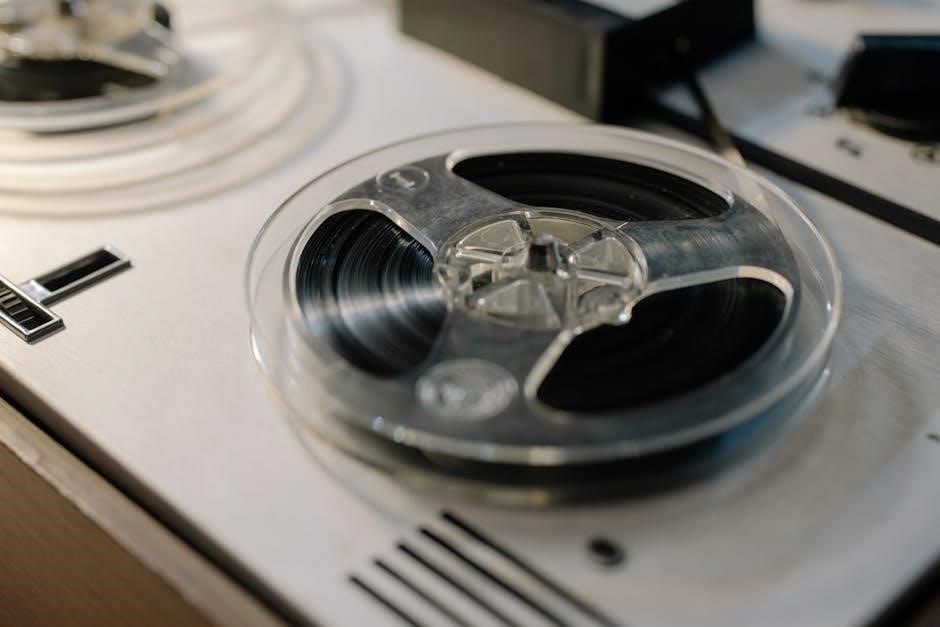
Safety Precautions
Always follow safety guidelines when using your KitchenAid ice maker. Use two people to move the appliance and ensure power is disconnected before installation. Avoid hot water and sharp objects that may damage components. Regular maintenance and adherence to manual instructions ensure safe operation and longevity.
General Safety Tips
Always prioritize safety when using your KitchenAid ice maker. Ensure the appliance is installed on a stable, level surface and keep it away from direct sunlight and heat sources. Avoid using hot water, as it may damage the unit. Never insert sharp objects or abrasive cleaners, as they can harm internal components. Keep children away from the ice maker to prevent accidental injuries. Regularly inspect the power cord and water lines for damage or leaks. Disconnect the power before performing any maintenance or cleaning. Use only recommended cleaning agents to avoid chemical damage. Follow the manual’s guidelines for moving or servicing the appliance to ensure safe handling and operation.
Handling and Moving the Ice Maker
When handling or moving your KitchenAid ice maker, always take precautions to avoid damage or injury. Ensure the appliance is unplugged before moving to prevent electrical hazards. Use two or more people to lift and move the ice maker, as it can be heavy and unstable. Avoid dragging or sliding the unit, as this may cause damage to the exterior or internal components. Secure any loose parts, such as the water line or ice bin, before relocating the appliance. Always lift from the bottom or sides, never from the top, to maintain balance. Keep the ice maker upright during transportation to prevent water or ice from spilling or leaking. For added safety, refer to the manual for specific handling instructions tailored to your model.
Your KitchenAid ice maker is designed for long-term performance with proper care. For further assistance, visit KitchenAid’s official website or register your product for support.
Final Tips for Optimal Performance
For your KitchenAid ice maker to function optimally, ensure regular cleaning and maintenance. Check the water line for leaks and maintain proper ice levels. Defrosting periodically prevents ice buildup. Always refer to the manual for specific care instructions. Regularly inspect and replace worn-out parts to avoid issues. Proper installation by a qualified technician is crucial. Keep the surrounding area clear for airflow. Follow the recommended settings for ice production to conserve energy. Lastly, download the latest user guide from KitchenAid’s website for updated tips and troubleshooting. By adhering to these guidelines, your ice maker will provide years of reliable service.
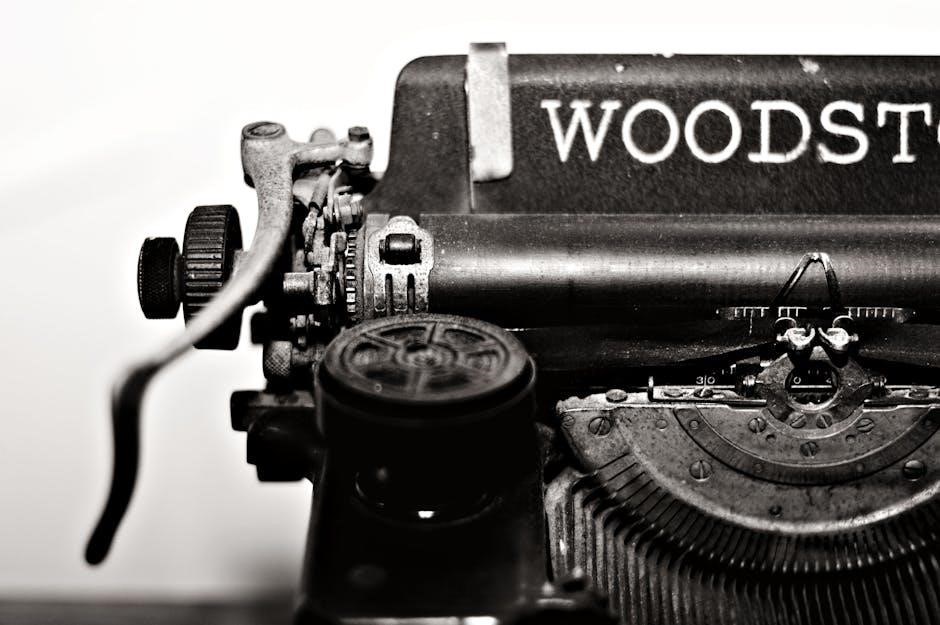
Resources for Further Assistance
For additional support, visit KitchenAid’s official website to download the complete user manual or installation guide specific to your model. The manual is available in PDF format and can be printed for convenience. If you encounter issues, contact KitchenAid’s customer service or refer to the troubleshooting section. You can also find helpful resources on authorized dealer websites or community forums. Ensure to use the correct model number when searching for manuals or parts. For complex repairs, consult a certified technician. KitchenAid’s website also offers a model-specific guide to help you navigate features and maintenance effectively. Utilize these resources to maximize your ice maker’s performance and address any concerns promptly.




